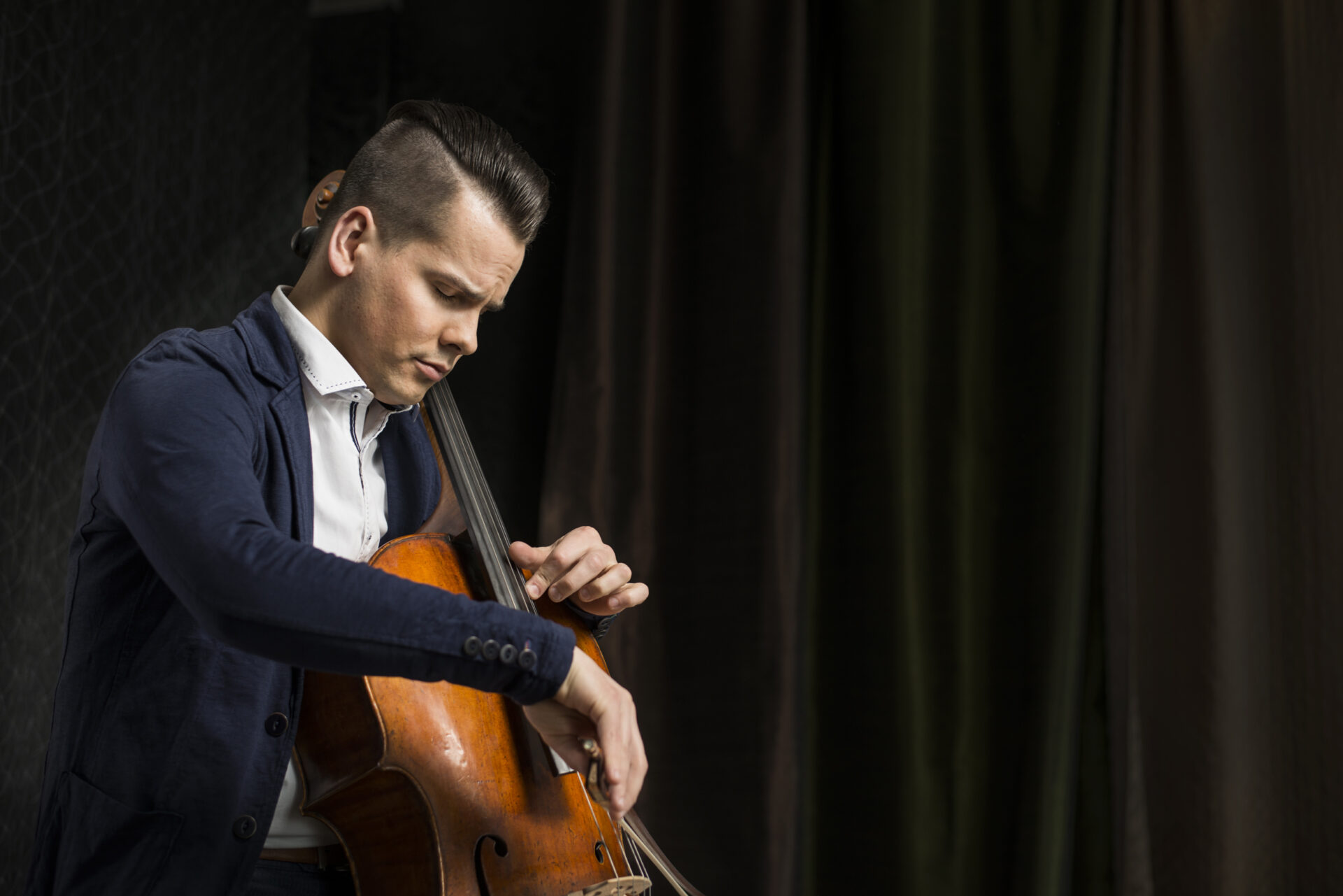
23. 11. 2024, 3 p.m.
Villa Tugendhat
Cello: Václav Petr
Piano: David Mareček
The performance lasts for 60 minutes without pause.
Josef Suk – Ballade and Serenade for Cello and Piano, Op. 3 (Nos. 1 and 2)
Leoš Janáček – Fairytale for Cello and Piano
Antonín Dvořák – Silent Woods, Op. 68/5;
Rondo for Cello and Piano in G minor, Op. 94
Igor Stravinsky – Suite Italienne For Cello and Piano
The afternoon concert in the beautiful setting of Villa Tugendhat will bring compositions by Czech composers and Igor Stravinsky performed by excellent chamber players.
Two small compositions Ballade and Serenade by Josef Suk (1870–1935) date from the composer’s youth. The first is from 1890, i.e. from his studies at the conservatory, but before he studied at the Dvořák’s Conservatory Master School. It is a charming salon-type composition. The Serenade is eight years younger and was written in the vicinity of Suk’s incidental music to Zeyer’s Radúz and Mahulena and Symphony in E major. Suk wrote Serenade for the music department of the Young Club in Prague.
The inspiration for Janáček’s Fairytale for Cello and Piano was Vasily Andreyevich Zhukovsky’s fairytale “Skazka o care Berendej, o syne jego Ivana tsarevich, o chitrostjach Koschei bezsmertnogo i o premudrosti Marja tsarevny, Koschei docheri”. This was neither the first nor the last time Janáček used a Russian theme. Janáček finished the first version of this story about the Tsar’s ill-considered promise, which caused him to lose his only child, on 10 February 1910. The autograph contains three movements. The Fairytale was performed on 13 March 1910 as part of the sixth sonata lesson at the Brno Organ School. Subsequently Janáček arranged the composition into four parts and had it performed on 12 March 1912. The third version was published in 1923. The nature of the composition suggests that Janáček composed it during years of certain despair and loneliness.
Shortly before his departure for the United States, Antonín Dvořák (1841–1904) undertook a farewell concert tour in 1892. For this occasion, he arranged for cello and piano the fifth movement from his earlier four-hand piano cycle From the Bohemian Forest. The small piece has a serious, reflective nature. Rondo was also created for the aforementioned tour, but as a separate, original composition.
In 1920 Igor Stravinsky (1882–1971) composed for the Russian Ballet the delightful suite Pulcinella, a ballet that harks back to the Italian Baroque. The ensemble’s impresario, Sergei Diaghilev, found melodies from the work of Baroque composer Giovanni Battista Pergolesi, which he presented to Stravinsky. In his inimitable way, he worked them into a ballet series. Such an approach to composition, borrowing themes from another composer, aroused indignation, as did Stravinsky’s whole emerging neoclassical mode of composition. However, the effect of this piece was unquestionable and the composer then used some of the numbers in other arrangements for violin or cello and piano. Today these compositions are among the gems of the then emerging avant-garde.
Jiří Zahrádka